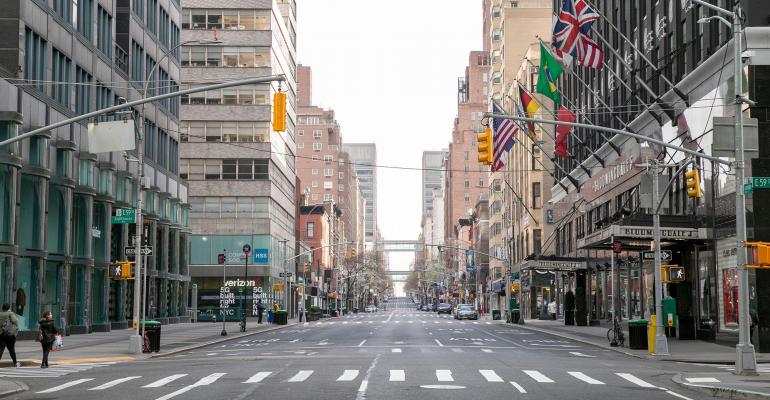(Bloomberg)—Pop out of the 59th Street subway stop, walk across Lexington Ave. and hang a left to step back into peak-pandemic time.
There, you’ll find an entire block of vacant storefronts, three in a row, in what was at one point prime New York real estate. The Banana Republic that occupied the first corner closed its doors in early 2020. So too did the Gap that long held the spot next door and the Victoria’s Secret two doors down. Huge signs advertising their availability hang in the windows.
In a city that's been very slow to recover from the pandemic -- unemployment across the five boroughs is almost double the national average -- there's perhaps no section that's been slower than midtown Manhattan. And within midtown, there are few, if any, blocks that better symbolize the malaise than this one. It's a sight typically associated with a city in rapid decay, something that New York's detractors are quick to suggest.
The truth is more nuanced. This neighborhood was, from a commercial standpoint, already losing out to areas around it when the pandemic hit. The number of riders using the 59th Street stop has been declining for years now. Since 2014, it’s down more than 50%. The lockdowns, coupled with the unhurried return of office workers who've long made up the bulk of shoppers in the area, only served to exacerbate that downturn.
“It’s probably the slowest market to return to pre-Covid levels out of any in New York City,” said Steve Soutendijk, an executive managing director at Cushman & Wakefield, the national brokerage firm. “It’s a little bit of a mystery.”
In broker speak, this is the “Bloomingdale’s area.’’
For years, the iconic, glitzy department store was a huge draw for bankers, high-society types and, thanks in part to Jennifer Aniston’s character in the sitcom “Friends,’’ tourists. They flocked to the store in droves and, once in the neighborhood, found their way to the smaller surrounding retail stores.
But in an age of online shopping and a preference for small-batch items that offer a veneer of uniqueness, Bloomingdale’s is no longer the anchor it once was, says Michael Hirschfeld, a vice chairman at real estate firm Jones Lang LaSalle. “It’s a model of shopping that’s not entirely in favor at the moment,” he says. And while domestic tourists have nearly returned to the city in full, the ones who matter most to the area’s shops — foreigners — have not. The city estimates that international tourism will only reach 60% of pre-Covid levels this year. The data on office workers’ return is even bleaker: Only 38% were at their desks in the city on a typical day in April, according to a survey conducted by the Partnership for New York City.
There is at least one glimmer of hope, though, for the sputtering neighborhood. More people are now walking past the vacant shops on that block on Lexington than they did back in 2019 when all the retail space was occupied, according to cell phone tracking data from Orbital Insight. The block’s rate of foot-traffic growth is even outpacing that of surrounding areas.
“I don’t think these spaces are staying vacant forever,” Soutendijk said.
Newmark and Jack Resnick & Sons, the brokerages tasked with leasing out the spaces, declined to comment.
To contact the author of this story: Marie-Rose Sheinerman in New York at [email protected].




